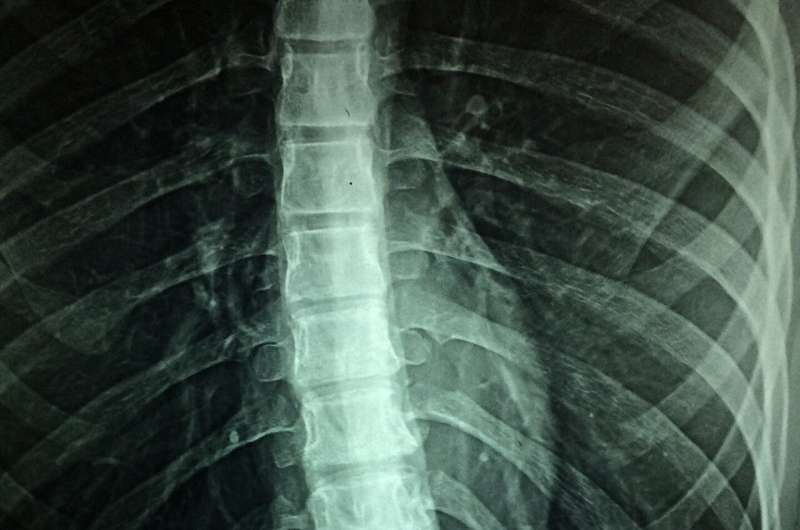Spinal cord stem cells can help repair after injury

Spinal cord injury often leads to permanent functional impairment. In a new study published in the journal Science researchers at Karolinska Institutet in Sweden show that it is possible to stimulate stem cells in the mouse spinal cord to form large amounts of new oligodendrocytes, cells that are essential to the ability of neurons to transmit signals, and thus to help repair the spinal cord after injury.
The spinal cord conveys signals from the brain to the rest of the body and spinal cord injury often leads to a degree of paralysis as some nerve fibers become transected and others, while intact, operate less efficiently. This impaired function is often caused by the loss of oligodendrocytes, a type of insulating cell that facilitates neuronal signaling.
In many organs, damaged tissue can be repaired by stem cells that create the cell types that have been lost. There are stem cells in the adult spinal cord, but these give rise primarily to scar forming cells after an injury. The scar tissue limits the extent of the damage but does not contribute to the replacement of lost cells.
In the current study, the researchers carefully characterized spinal cord stem cells at a genetic level in mice, and found that the stem cells' DNA was receptive to signals that stimulate the formation of new oligodendrocytes.
"We found that the stem cells were not locked into forming scar tissue and understood how we could nudge them in another direction to also form cells that contribute to repair," says the study's first author Enric Llorens-Bobadilla, researcher at the Department of Cell and Molecular Biology at Karolinska Institutet.
By controlling which genes were activated in the stem cells, the researchers were able to stimulate an abundant generation of new oligodendrocytes, which led to improved nerve fiber function in the damaged spinal cord.
"This shows that it's possible to affect stem cells in the nervous system so that they contribute more to functional recovery," says principal investigator Jonas Frisén, professor at the Department of Cell and Molecular Biology, Karolinska Institutet. "Although the studies were done in mice and are not directly translatable to humans, they indicate a conceptually new strategy for stimulating repair after damage to the nervous system."
More information: Llorens-Bobadilla et al., A latent lineage potential in resident neural stem cells enables spinal cord repair. Science (2020). DOI: 10.1126/science.abb8795



















